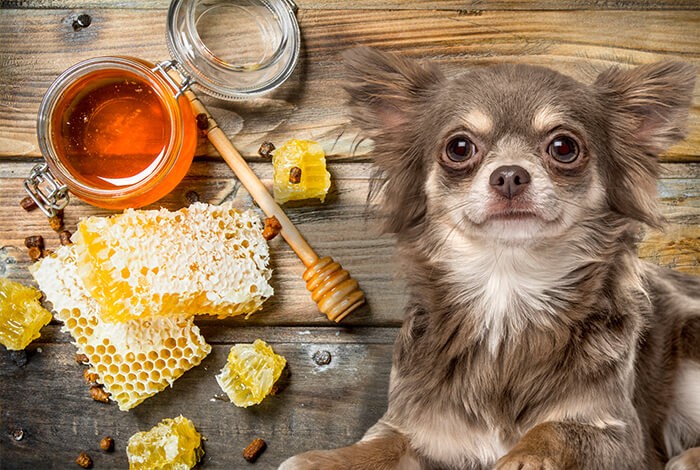![]() Reviewed By Joana Garrido DVM
Reviewed By Joana Garrido DVM
Can dogs eat honey? The answer is generally yes, in moderation. Honey has natural anti-inflammatory and antimicrobial properties that can help protect your dog from allergies and infections. But it’s important to be aware that there are some risks associated with feeding honey to dogs.
What Is Honey?
Honey is a viscous golden liquid made by honeybees by gathering and regurgitating nectar.
It is stored in a honeycomb, which is a group of hexagonal cells made up of beeswax and propolis, which is a natural plant resin mixture.
Is Honey Safe for Dogs?
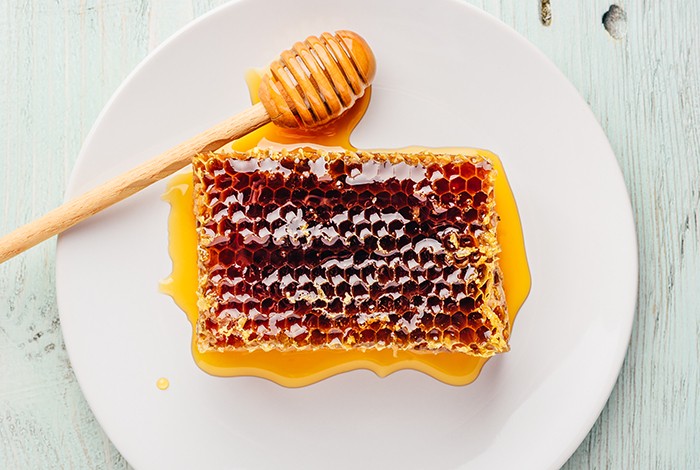 Honey may be a nutritious treat for dogs, but not all canines can have this human food. These include:
Honey may be a nutritious treat for dogs, but not all canines can have this human food. These include:
1. Obese and Diabetic Dogs
Honey is mainly made up of simple sugars such as fructose, which comprises around 70 to 80% of it. A teaspoon of honey contains about 17 grams of sugar and 70 calories.
Adding too much honey to a dog’s food can lead to weight gain and a spike in blood sugar. It is not recommended for a diabetic dog or an obese dog.
2. Dogs with Bee Sting Allergies
Bee sting allergies are rare in canines, but they can occur. Dogs with this condition are likely to be allergic to honey as well. If it is your dog’s first time eating honey, let him eat a small amount.
Then look out for signs of an allergic reaction, such as itching, scratching, skin redness, vomiting, and diarrhea. Take him to the vet immediately if he shows these symptoms.
3. Puppies, Senior Dogs, and Immunocompromised Canines
Raw honey is prone to containing botulism spores. Botulism is a severe illness that can cause paralysis in dogs. Pooches can catch this disease by coming into contact with honey that has Clostridium botulinum or botulism spores.
Can puppies have honey? The answer is no. Giving honey to puppies is not recommended, especially if it is raw.
Puppies below 1 year of age are highly susceptible to contracting botulism as they have weak immune systems.
Raw honey should be avoided by senior dogs and dogs with compromised immune, such as those undergoing chemotherapy or diagnosed with cancer. With this in mind, only offer raw honey to dogs with a clean bill of health.
Are There Benefits to Feeding Dogs Honey?
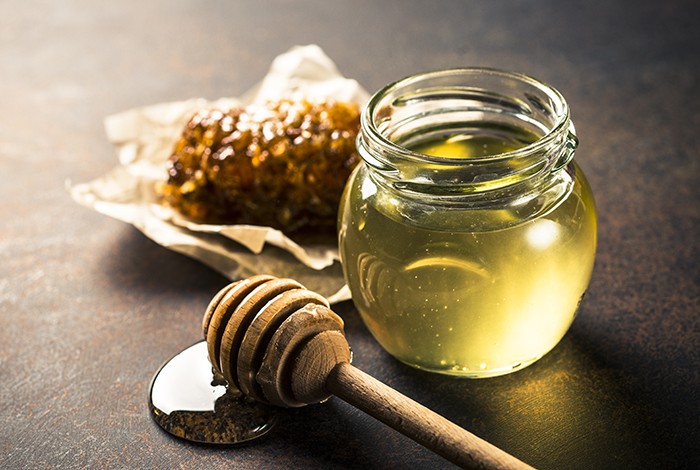 Is honey good for dogs? Honey is good for dogs since it has anti-inflammatory, antimicrobial, and antifungal. It also has an abundance of antioxidants, such as flavonoids and phenolic acids, and antimicrobial substances, like hydrogen peroxide.
Is honey good for dogs? Honey is good for dogs since it has anti-inflammatory, antimicrobial, and antifungal. It also has an abundance of antioxidants, such as flavonoids and phenolic acids, and antimicrobial substances, like hydrogen peroxide.
Giving dogs honey provide them with these health benefits:

1. Alleviates Allergies
Honey, in its raw form, carries small amounts of pollen. Exposing your dog to this allergen in diminutive quantities helps build up his immune resistance against it over time.
It aids in decreasing the frequency and severity of his allergic reactions.
2. Mitigates Skin Problems
Honey has antimicrobial, antiviral, and antifungal agents that protect your dog from skin-irritating microbes.
It can be used as a natural topical treatment for rashes, skin infections, and other dermatological issues in canines. Applying honey on scrapes and minor wounds encourages faster healing.
3. Soothes Cough and Throat Irritation
The anti-inflammatory properties of honey make it a good cough suppressant. Ingesting this human food eases sore throat in dogs.
It also acts as a moisturizing compound that lubricates the throat and prevents itchiness and irritation from taking place.
4. Improve Appetite
Dogs with certain medical conditions may not have much interest in food, but sweet items can help improve their appetite. This is especially helpful for dogs with pancreatitis or kidney disease, as they need to avoid certain nutrients. Honey can be added to their diet as a teaspoonful to make it more appealing without causing any harm.
Additionally, honey’s sweet taste can help mask the flavor of medication, making it easier for dogs to take.
5. Improves Digestion
Studies suggest that honey is prebiotic that helps good gut bacteria thrive in dogs’ digestive tract. It helps maintain a balanced intestinal microbiome, which promotes healthy digestion.
The prebiotic nature of honey, paired with its anti-inflammatory properties, relieves various stomach problems, such as constipation and diarrhea.
6. Weight Control
If fed to dogs in the right amount, honey can help with weight management. Although this human food is a simple sugar, it is absorbed more slowly in the body compared to table sugar.
Hence, feeding honey to dogs slows down their digestion, which in turn decelerates their hunger.
7. Treat hypoglycaemia in the diabetic dog
If a diabetic dog experiences a hypoglycaemic crisis at home, owners can rub honey, glucose, or maple syrup on the tissues inside the dog’s cheek and then give the same solution by mouth once the dog can swallow. Owners should then seek immediate veterinary attention.
A Word of Caution About Giving Honey to Your Dog
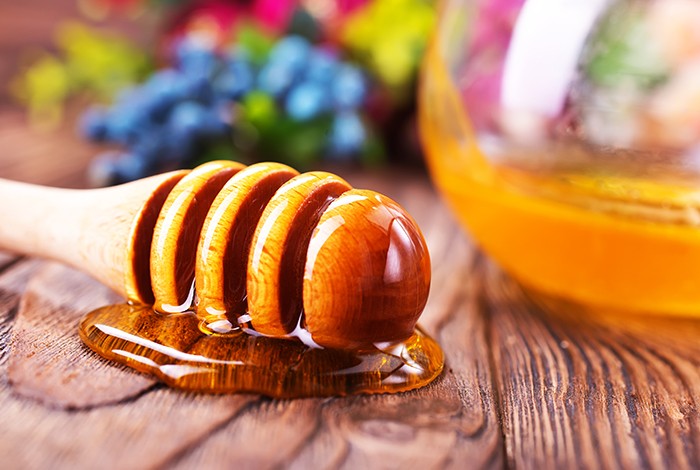
Honey contains 2 types of sugar: fructose and glucose. These are bad for your dog as they can cause tooth decay, leading to severe periodontal diseases.
Do not forget to brush your dog’s teeth after letting him eat honey.
Related: 6 Safe Homemade Dog Toothpaste
What Kind of Honey Can I Give My Dog?
Not all honey is the same. Some contain fewer nutrients and health benefits than others.
Honey commonly comes in 2 forms: raw or processed. The latter undergoes a pasteurization process, which strips off its vitamins and minerals.
On the other hand, raw honey is strained and bottled, so its essential nutrients are preserved.
Can dogs have raw honey, or is processed honey a better choice? Raw honey is a better choice than processed honey.
Feeding raw honey to dogs can help alleviate certain canine health issues such as ulcers, diarrhea, and sore throat. It is also used topically to treat mild burns and sunburns.
How to Tell Apart Raw Honey from Processed Honey?
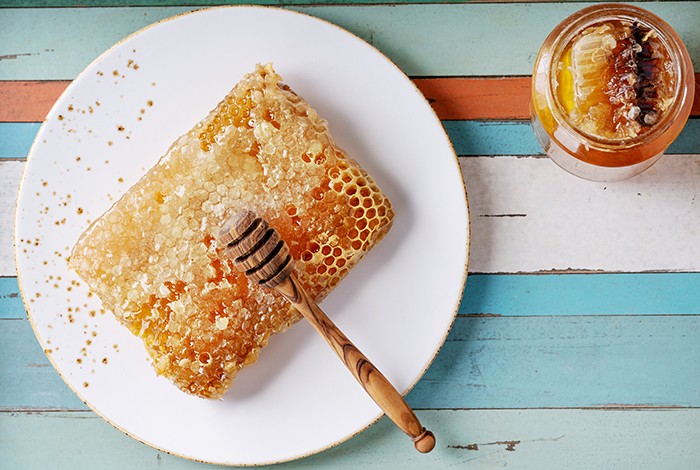
Check the label if it says 100% raw or unpasteurized. Keep in mind that buzzwords such as “organic” and “pure” do not mean that the honey did not undergo pasteurization.
Another way to know if the honey is raw is by examining its consistency. Raw honey tends to be cloudy and creamy. Over time, it may crystallize into a semisolid state.
In contrast, processed honey is often translucent and has a smooth texture.
How Much Honey Can You Feed Your Dog?
Honey must be fed to your dogs in moderation because of its high sugar content. The recommended amount of this human food will depend on the dog’s body weight.
| Dog’s Body Weight | Serving Size |
|---|---|
| Dogs 10 pounds and under | ¼ teaspoon daily |
| Dogs 10 to 20 pounds | ½ teaspoon daily |
| Dogs 20 to 50 pounds | 1 teaspoon daily |
| Dogs over 50 pounds | 2 teaspoons daily |
Ways to Offer Your Dog This Tasty Superfood
The simplest method to let your dog enjoy honey is by feeding it to him directly by spoon. If you want to get more creative, mix it with his food to improve its palatability.
Ultimately, you can use honey as your main ingredient when making homemade treats for your furry pal.
 Homemade Honey Dog Treats
Homemade Honey Dog Treats
Here is a honey dog treat recipe that will make your pooch love it even more:
Honey Vanilla Biscuits

Ingredients:
- 1 teaspoon vanilla extract
- 1 egg
- 1 teaspoon baking powder
- 2 cups water
- 2 bananas, mashed
- 2 tablespoons honey
- 4 ½ cups whole wheat
Procedure:
- Preheat the oven to 350 degrees Fahrenheit.
- Grease 2 large baking sheets lightly with oil.
- Combine the egg, honey, mashed bananas, water, and vanilla in a large bowl.
- Stir in whole wheat flour and baking powder.
- Using an electric mixer, beat the dough at medium speed until the ingredients are well-combined.
- Place the dough onto a floured surface and knead it until it is no longer sticky.
- Roll out the dough to ¼-inch thickness and cut it into mini shapes with your favorite cookie cutter.
- Place the dough shapes on the prepared baking sheets.
- Bake in the preheated oven until the cookies are lightly browned, which is about 20 minutes.
- Turn off the oven and leave the cookies until dry and crisp (about 30 to 40 minutes).
- Remove the baking sheet from the oven and transfer the cookies to a wire rack to fully cool for 10 minutes.
- Serve it to your furry friend. Store leftovers in an airtight container.
Other Bee Products Beneficial to Dogs
Apart from honey, certain bee products are purported to provide health perks to your canine companion such as:

1. Bee Pollen
Bee pollen refers to the pollen bees bring home to the hive for feeding their colony. Not only does it help alleviate allergies, but it also helps slow down aging in dogs by fighting off free radicals.
2. Propolis
Propolis is a sticky resinous substance that bees acquire from the bark and buds of trees. This compound is said to possess natural antibacterial properties.
Some of the health benefits propolis is believed to harbor are mitigating coughs and infections as well as inhibiting cancer.
The health benefits of these bee products are all anecdotal. Since studies are yet to prove these claims, use them at your discretion.
3. Royal Jelly
Royal jelly is a gelatinous secretion produced by honeybees for feeding the queen bee and their young.
Giving it to dogs can revitalize their skin and coat, enhance their stamina, and alleviate anxiety and depression.
4. Beeswax
Beeswax can be melted and applied topically once warm on dry and cracked areas of your dog’s skin or paws for moisturization.
Help Save the Bee Colony
In 2020, nearly 46% of honeybee colonies were lost, and their population continues to decline. Moreover, 40% of all bee species are at high risk of extinction.
This does not only mean a decrease in honey production but also affects the diversity of the food supply. Numerous crops in the world rely on pollinators such as bees to spread and multiply.
One of the best ways you can preserve the bee population is by avoiding the use of chemical pesticides, particularly neonicotinoids. They are severely toxic to bees.
Another way to help the bee colony thrive is to plant flowers in your yard. Choose dog-friendly plant species these pollinators love the most, like bee balm, catmint, and phlox.
FAQs About Honey for Dogs
1. Is Local Honey Better for Dogs?
Locally grown honey is better for dogs, especially those with seasonal allergies.
Canine and human anecdotal studies found that local honey contains local pollen spores. Ingesting them showed promising results in reducing pollen allergy symptoms.
2. Can Dogs Have Manuka Honey?
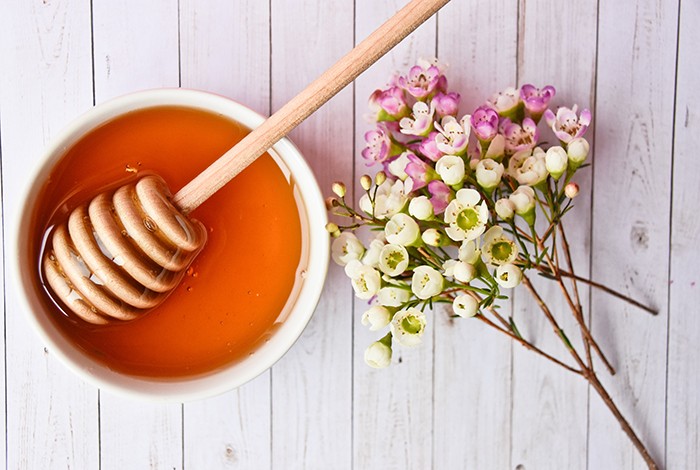
Dogs can have manuka honey occasionally. This type of honey shares nearly the same health benefits as regular honey.
However, clinical trials show that manuka honey can eliminate more than 250 strains of bacteria. It is also found to have antibacterial properties, which aid in treating wounds and burns.
The use of manuka honey for coughs is observed to yield more positive results compared to regular honey. However, this is an anecdotal claim, so do your research and consult the vet before giving your dog honey.
3. Can Dogs Eat Honey Peanut Butter?
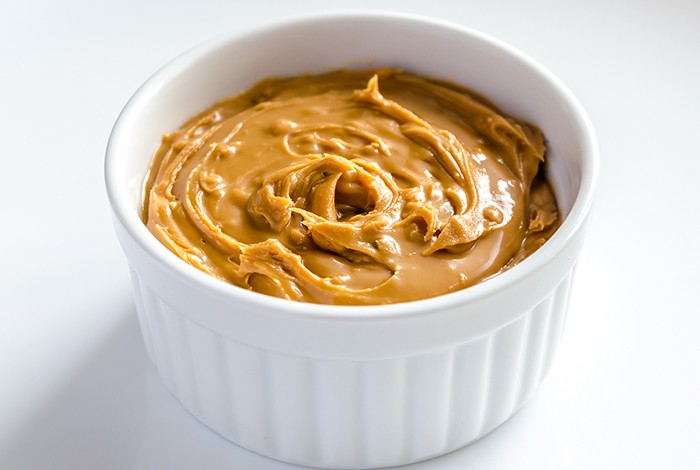
Honey peanut butter is okay to be shared with our furry companions only if it is unsalted and free of additional sugar, especially xylitol, which is very deadly for dogs.
Since many types of peanut butter contain preservatives, it is not the best snack for dogs. Make sure to check the ingredient list before serving.
4. Will Honey Upset a Dog’s Stomach?
Honey will upset a dog’s stomach if eaten in excess. Always follow the feeding guideline to avoid overfeeding honey to your dog.
Summary
Feeding your dog raw, locally sourced honey can be a natural and effective way to support their health. Honey’s anti-inflammatory and antibacterial properties can help alleviate allergies, skin issues, and other common canine health concerns. While some dogs enjoy sweet foods, it’s important to feed them in moderation.
If you’re interested in discovering more human food that offers health benefits to your furry friend, be sure to check out our other Human Food articles.

